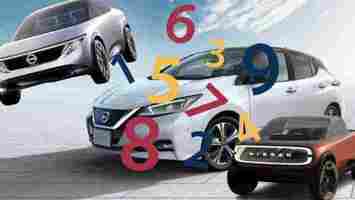Tesla VP admits Autopilot wasn’t fully disengaged during recent fatal crash
Yes, you read correctly.

During Tesla’s Q1 earnings call on April 17, Lars Moravy, Tesla’s Vice President of Vehicle Engineering, commented on the recent fatal crash in Texas and proved that Elon Musk’s claims were, well, lies.
Musk had claimed via Twitter that Autopilot wasn’t enabled, and that it wouldn’t work on a street without lane lines, as was the case.
According to a transcript of the earnings call, he blamed again the media for deception and characterized the allegations against Autopilot as “completely false.”
Ironically, Moravy confirmed that at least one of Autopilot’s features – adaptive cruise control – was on before the crash occurred.
Nevertheless, he said that “ Autosteer (another feature of Autopilot) did not and could not engage on the road condition that…
Similarly, he added that there was likely someone on the driver’s seat, based on the deformed steering wheel and the unplugged seatbelts post-crash.
Yet again, these comments bring more questions than answers .
Do EVs excite your electrons? Do ebikes get your wheels spinning? Do self-driving cars get you all charged up?
Then you need the weekly SHIFT newsletter in your life. Click here to sign up .
23 new models and $18B: The staggering numbers behind Nissan’s new all-electric plan
On Monday, Nissan unveiled its “Ambition 2030” grand plan, which — surprise, surprise — is all about electrification and sustainability goals.

Too many pledges have been made, so we’ve broken them down for you in this handy list, by the numbers.
23: The number of total electrified vehicle models (15 EVs and 8 PHEV/hybrids) the automaker will introduced by 2030, representing more than 50% of its global sales
4: The amount of revealed concept cars that showcase Nissan’s tranformation
75%: How much of its Europe car sales are planned to be all-electric by 2026
55%: How much of its Japan car sales are planned to be all-electric by 2026
40%: How much of its China and US car sales are planned to be all-electric by 2026 and 2030, respectively
65%: How much the introduction of cobalt-free tech will reduce the cost of lithium-ion batteries by 2028, when Nissan will also launch its proprietary all-solid-state batteries (ASSB)
$75: How much Nissan expects its ASSB will bring down the price per kWh by 2028, aspiring to achieve cost parity between EVs and internal combustion vehicles in the future
52 GWh: How much the automaker will increase its global battery production capacity by 2026, aiming for 130 GWh by fiscal year 2030.
2.5 million: The number of Nissan and INFINITY vehicles that will feature the ProPILOT autonomous driving tech by 2026
$17.6 billion: How much Nissan will invest within the next five years in support of Ambition 2030
Well, those are some pretty ambitious commitments and I honestly hope they can be realized — this time at least. Back in January, Nissan announced its aim to offer a fully-electric lineup of new vehicles by 2030, and not a mere 50% as it’s now pledged…
Still driving a gas-powered car? Use it to help change driver behavior
Are you still driving a gas-powered car? As you no doubt know by now, it’s YOUR fault that the planet is getting hotter and the world is ending. But don’t worry, there’s a way you can assuage some of that guilt without even leaving your car. In fact, please stay right there, in your car.

Amsterdam and Helsinki are two of my favorite smart cities. Researchers are looking for local car drivers to help make these cities more liveable.
The project is called Code the Streets . They’re seeking car drivers to test new functions in the traffic navigation app TomTomAmiGO and Mercedes-Benz‘s navigation planner. The aim is to understand better how to route motorists in a more environmentally aware way.
Getting people to change their habitual car-driving routes is hard. Incentives must be situation-specific and offered in real-time, while driving.
Code the Streets for sustainable routing
In creating this pilot, cities and service providers have built an open application programming interface (API). It allows cities to communicate directly with car drivers via the service providers. This makes it possible to nudge drivers to choose alternative sustainable routes.
The pilot focuses on guiding car drivers away from areas traditionally congested or with poor air quality. Drivers receive data about school zones, traffic jams, environmental zones, and vulnerable infrastructure.
The pilot planners believe that digital tools are also a catalyst for repurposing public space for different uses at different times. Imagine, for example, that a traditional car driving road changes to a bicycle lane in the afternoon and a terrace in the evening.
The initiative is a collaboration effort. Partners include:
City of Amsterdam
City of Helsinki
Aalto University
Amsterdam Institute for Advanced Metropolitan Solutions (AMS Institute)
Forum Virium Helsinki
Technical University Delft
The Future Mobility Network
It’s funded by TomTom, Mercedes-Benz, and EIT Urban Mobility.
Yes, I’m sitting in my car feeling guilty, how can I get involved?


All you have to do is fill in a short questionnaire and download the app. But, you need to be an Android user.
As a sweetener, you can get free tickets to Move Amsterdam if you’re in Amsterdam . This includes a guided exhibit tour and a drink at Madame Cyclette .
Find out more and register to join the pilot via the Code the Streets website.